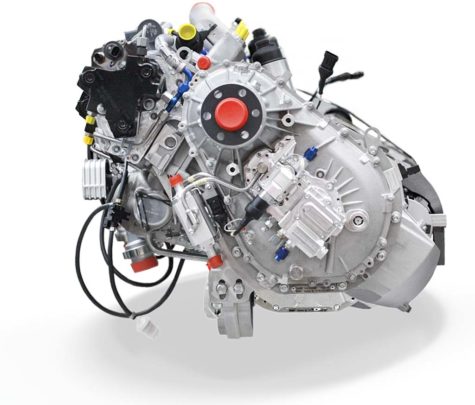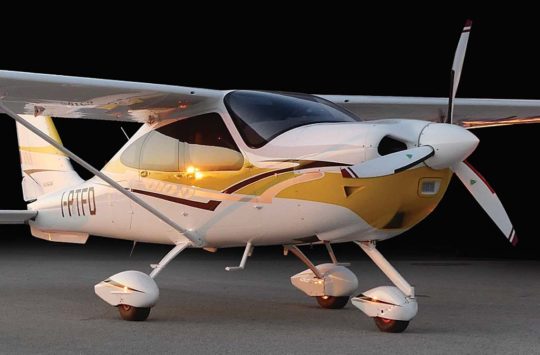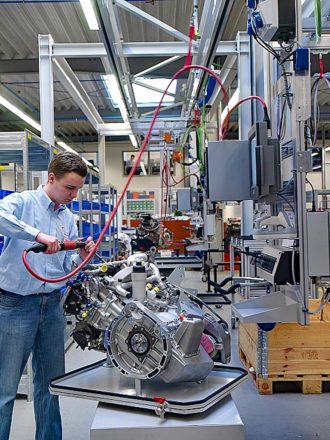Although airframes may present the look and offer the performance that stimulates an aircraft purchase, engines have long driven development of new airframes. One example is how jet engines completely transformed the design of airliners.
 Around the world outside the U.S., aviation fuels like 100LL are not widely available. Rotax has done well in many countries as its engines can operate on — in fact, experts say they run cleaner on — premium auto gas that is available in nearly every country.
Around the world outside the U.S., aviation fuels like 100LL are not widely available. Rotax has done well in many countries as its engines can operate on — in fact, experts say they run cleaner on — premium auto gas that is available in nearly every country.
Likewise, because of the presence of airliners in every country, and for other technical reasons, fuels such as Jet-A are available in most locations. An airframe producer can make more sales to more countries if fuel is readily available.
LSA and kit-built owners may also want to visit Continental’s Titan engine website. The Jet-A series also includes the CD-135 engine with 135 horsepower that could meet many Light-Sport Aircraft needs.
New from Continental
As the newest edition to their CD-100 engine series, Continental’s CD-170 engine “continues the tradition of innovation for the Jet-A fueled family,” stated the Alabama-based manufacturer. “Our technologically-advanced, 170-horsepower engine, turbocharged, four-cylinder, in-line engine … has a low operating cost.”

Continental’s new CD-170 Jet-A engine.
Continental promoted their Jet-A piston powered engines as they launched the CD-170 as an alternate power plant for the four-seat, conventionally-certified Tecnam P2010.
Learn more directly from Tecnam regarding their 2010 TD-i.
“By offering Jet-A engines, customers gain distinctive advantages on their aircraft,” explained Continental. “A Jet-A diesel-cycle engine … always operates in the lean condition, eliminating the extra fuel burn during rich-of-peak takeoff conditions.”
Continental’s CD-100 Jet-A engine series is automotive-based, liquid-cooled, and turbocharged. “They are another example of our commitment to the advancement of general aviation technology,” stated the company.

Tecnam’s P2010 four seat model.
“This durable engine includes a technologically advanced fuel system design that [adds] an additional level of redundancy, providing aviators additional peace of mind,” boasted Continental Aerospace Technologies.
The newest CD-170 joins the series as a family of liquid-cooled, turbocharged, four-cylinder, fuel-injected, compression-ignition, four-stroke, geared, right (clockwise) rotating aircraft engine with FADEC (Full Authority Digital Engine Control) dual channel engine controls,” said Continental. That’s quite a phrase but the words clearly describe how this is different than the company’s other piston engines.
Technically Speaking…
Continental’s CD-170 is a four-cylinder, in-line diesel-cycle engine with dual overhead cams, uses four valves per cylinder, common rail-direct injection, and liquid cooling with wet sump oil system and reduction gears. This is a configuration many Light-Sport Aircraft and Sport Pilot kit aircraft owners already know and trust.

A worker assembles an engine at Continental’s European facility.
“This fresh Jet-A-fueled 170 horsepower engine offers the ease of flying a single lever control coupled with electronic engine monitoring and redundancy safety features,” noted Continental.
The CD-170 may be the newest design and highest horsepower engine in the CD-100 series family but the CD-100 family is a proven platform with more than 6,000 engines delivered and over 7.1 million flight hours in service. Listing several key differentiators from others in the series, Continental said, “The CD-170 engine has a lower compression ratio that allows for higher fueling and more power.”
Continental expects to receive EASA approval by the end of May 2020.
P2010 represents “a modern aircraft for fleet schools and individual aviators,” said Paolo Pascale, Tecnam’s CEO. “By incorporating Continental’s Jet-A engine, the P2010 TDI is the ideal aircraft, combining a modern, sleek, ‘green’ design with consistent, robust power.”
“Continental is proud to be Tecnam’s newest aircraft partner, bringing innovative aircraft to aviators around the world,” said Robert Stoppek, President & CEO of Continental Aerospace Technologies. On March 30, 2020, Continental announced that Stoppek was named CEO and President. Prior to joining Continental, he was formerly CEO for Waukesha Engine, part of the former GE Distributed Power business. He is currently pursuing flight instruction in helicopters, a spokesperson said.
Continental Aerospace is owned by AVIC International Holding company listed on the Hong Kong stock exchange (HKEX: 232.HK).
Technical Specifications:
- Certified Fuels — Diesel, Jet-A1
- Displacement — 122 cubic inches
- Power — 168 horsepower
- Max. Continuous Power — 153 horsepower at 2,250 RPM
- Power Best Economy — 97 horsepower at 1,925 RPM
- Maximum Propeller Speed — 2300 rpm
- Bore x Stroke — 3.268 x 3.622 inches
- Compression ratio — 15.5:1
- Height — 25.03 inches
- Width — 30.63 inches
- Length — 32.12 inches
- Dry Weight — 343.9 pounds
Continental’s CD-170 has an initial time between replacement (TBR) of 1,200 hours with plans to increase in the future.


I also called and spoke with a Continental rep about an engine purchase for a 182 and he tried everyway he could to talk me out of it. I use my plane for a small delivery service and the ability to purchase the lower cost fuel would be a big incentive. He told me they mostly sell these engines in Europe and only sell a few in the U.S. every year. I offered to use my aircraft as a test bed because I normally fly 700 hours a year all over the nation, but he was not interested.
Is Continental finally interested in selling the CD line for airframes other than 172,PA28, or DA40? When I contacted them a few months ago they said they weren’t interested in selling me the CD-170 to power my RV-14 build.
Josh: it is hard for me to believe Continental does not want to sell this engine, however, it may be a support issue as they may not be well equipped to assist individual home builders. They have only recently launched the diesel, so perhaps they were focused on major general aviation brands at first. While this will not be a inexpensive choice, I feel sure Continental would like to sell to you if they can properly support the product and it’s installation. I recommend getting a toe of confidence in written form from Van’s (if you can) because Continental definitely wants to sell the Titan line to Van’s.
The CD-170 is the perfect replacement in the 180 hp Super Cub and clones. Although the Continental CD-170 produces only 168 hp at S.L., less than a x-340 (180 hp) or the IO-390 (215 hp), at 8,500 ft it produces the same power as the IO-390 on 60% of the fuel significantly increasing range. For a floatplane operating off high altitude lakes, that power is very welcome and the ability to burn marine diesel at thousands of marinas even better. The single power control reduces workload eliminating the need to fiddle with throttle, prop controller, mixture and eyeballing an EDM. Range with our existing long range tanks would go from 500 nm to almost 900 nm. The ability to buy off-road diesel at $1.93 vs $5.85 for 100LL is very attractive.
Dan, what are the engine revs at a prop speed of 2300. It’s got to be in the region of 3500-4000, which is where my VW Golf 2.0 GTDi produces the same power [125 kw] as this motor — in fact the specs are pretty similar.
Hi Bev: By all means, feel free to contact Continental Aerospace to ask this question.
The only down side on this new Diesel is (TBR, Time Before Replacement)! [Compared to proven engines] 1,200 hours is quite low for an engine. A TBO (Time Between Overhaul) of 2,000 hours or more would be a real game changer!
Hi Peter: I understand your comment, however, remember this is a new engine and, similar to other engine producers such as Rotax, they are likely waiting until 1,200 hours has passed without problems before extending the life toward 2,000 hours. In fact, a diesel should have a longer life as they are built heavier to handle the compression …with extra weight being a fact you didn’t reference. I suspect this engine will eventually have a life longer than most gasoline aircraft engines. Ask Continental Aerospace for more details.
I wonder if it makes sense for Continental (or anyone) to develop STCs for Cherokees, Skyhawks and the like, or for Rotax and their 915, which is less powerful but also handles auto gas.
I know only of one 100 horsepower Rotax STC for the 150, but no clue if it has taken off or if it makes financial sense.
Dan, at over 100 pounds heavier than the Continental O200-D, do you really think the CD-135 is a viable engine for a LSA?
Hi Stephen: Not at today’s LSA numbers but with LSA 2023 at higher weights, yes, possibly.